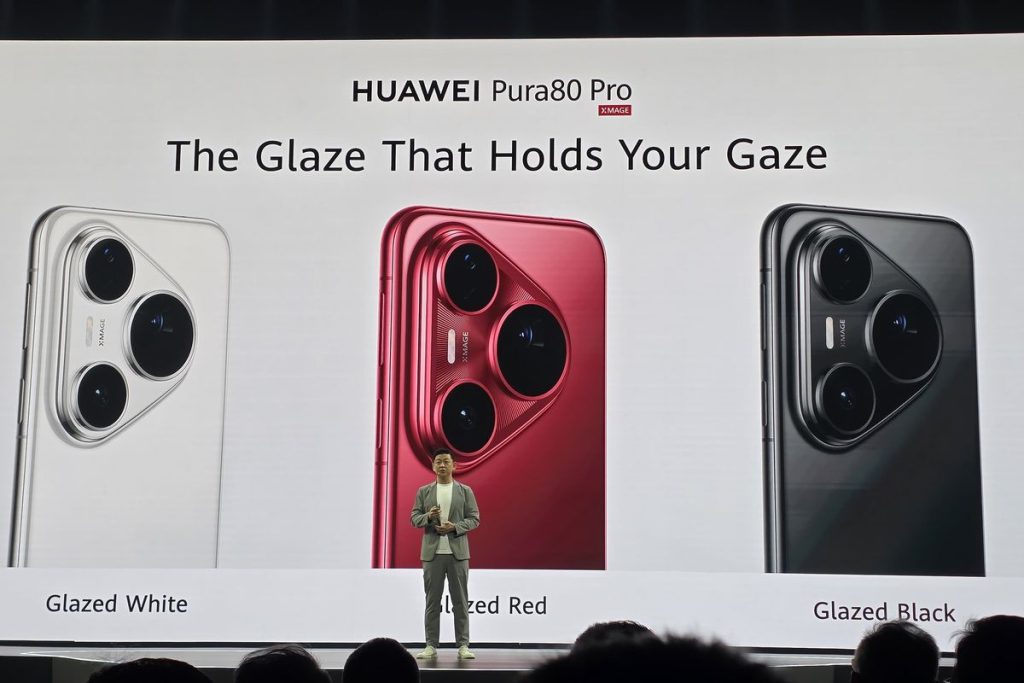
In a move that signals Huawei’s renewed ambition in Southeast Asia, the upcoming Huawei Pura 80 Pro and Pura 80 Ultra have officially passed Indonesia’s TKDN (Tingkat Komponen Dalam Negeri) certification or Local Content Requirement (LCR). This milestone is crucial for tech devices entering the Indonesian market, confirming that the duo is inching closer to its local debut.
This certification not only excites Huawei enthusiasts in the country, but also marks the continuation of Huawei’s push to reclaim its prestige in the premium segment. As informed by The Ministry of Industry in Indonesia, Huawei Pura 80 Pro and Ultra gain TKDN as much as 35,75 %. It means, they are allowed to be sold in Indonesia, as fast as they can.
So, what do these two flagship models bring to the table—and how do they compare to rivals like the Samsung Galaxy S24+, OPPO Find X7 Ultra, and iPhone 15 Pro?

A New Era of Huawei Flagships
First unveiled in China under the new “Pura” branding—replacing the well-known “P” series—the Huawei Pura 80 series stands out not just in terms of performance but also in aesthetic and photographic excellence. Both the Pura 80 Pro and Ultra showcase Huawei’s relentless innovation, particularly in camera technology and futuristic design.
The design language embraces clean minimalism, punctuated with bold geometric accents. The rear camera module is redesigned into a triangular “Starry Triangle” layout, a bold departure from the typical vertical or circular camera arrangements seen on most competitors.
Huawei Pura 80 Pro: The Balanced Powerhouse
The Huawei Pura 80 Pro sits comfortably in the upper flagship range. Here’s what it offers:
- Display: 6.76-inch LTPO OLED, 2844 x 1260 resolution, 120Hz refresh rate
- Processor: Kirin 9010 (Octa-core) with 5G support
- Camera: Triple rear setup
- 50MP main with variable aperture (f/1.4–f/4.0)
- 48MP telephoto (3.5x optical zoom, up to 100x digital zoom)
- 12.5MP ultra-wide
- Front Camera: 13MP ultrawide
- Battery: 5050mAh, 88W wired and 50W wireless charging
- Software: HarmonyOS 4.2
What makes it compelling is how Huawei blends pro-grade photography with energy efficiency. The Kirin 9010, although not as benchmark-dominant as Qualcomm’s Snapdragon 8 Gen 3, still offers smooth performance for daily and professional tasks—especially in synergy with Huawei’s lean OS.
Huawei Pura 80 Ultra: The Ultimate Imaging Machine
If the Pro model is impressive, the Pura 80 Ultra takes things to another level. Designed for camera enthusiasts and mobile creators, this is where Huawei flexes its full might.
- Display: 6.8-inch LTPO OLED, 2844 x 1260 resolution, 120Hz refresh rate
- Processor: Kirin 9010
- Camera: Triple rear setup
- 50MP Ultra Lighting main camera with retractable lens and variable aperture
- 40MP ultra-wide
- 50MP telephoto with 3.5x zoom
- Front Camera: 13MP
- Battery: 5200mAh, with same ultra-fast charging
- Build: Vegan leather back with splash-resistant coating
- Software: HarmonyOS 4.2
This model sets itself apart with its retractable camera lens, an engineering marvel rarely seen in smartphones. It mimics DSLR behavior—offering better bokeh, improved low-light depth sensing, and an authentic photographic experience. For content creators, this is arguably the most advanced mobile camera available outside of dedicated cinema gear.
Comparing with the Competition
In the realm of Android flagships, both Pura 80 Pro and Ultra are aiming to stand toe-to-toe with the likes of:
- Samsung Galaxy S24+: Offers Snapdragon 8 Gen 3 globally, superior ecosystem integration, but lacks the variable aperture and retractable lens.
- OPPO Find X7 Ultra: Comes close in photography, especially with dual periscope lenses, but doesn’t offer the same retractable lens innovation.
- iPhone 15 Pro: Still leads in raw video quality and ProRAW, yet Apple hasn’t adopted advanced aperture control or camera modularity.
One key advantage Huawei brings is battery longevity and charging speed. The 88W wired and 50W wireless charging outpace most competitors, including Apple’s modest 20W wired charging and Samsung’s 45W.
Additionally, Huawei’s design—especially on the Ultra—leans into luxury, with vegan leather finishes and bold color choices, rivaling even the best of what OPPO and Xiaomi offer in their premium editions.
Will Indonesia Welcome Huawei Back to the Premium Game?
With TKDN certification secured, it’s only a matter of time before Huawei officially launches the Pura 80 Pro and Ultra in Indonesia. Given the country’s love for photography, gaming, and mobile video, these devices—especially the Ultra—are well-positioned to cater to tech-savvy users who want something different than the mainstream.
Huawei still faces challenges—primarily the lack of Google Mobile Services (GMS). However, their AppGallery and Petal ecosystem have matured significantly, offering alternative solutions for most popular apps in the region.




























